Taiwan, once world’s factory, taps tourism to keep plants alive
‘Tourism factories’ seek to give new life to industries that have for years been moving operations overseas.
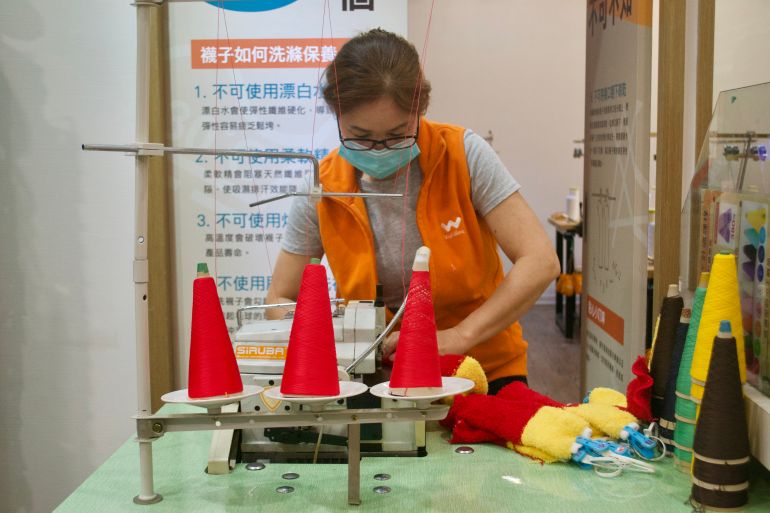
Taipei, Taiwan – Inside one of many small factories near the Taiwanese capital Taipei, a group of about 30 school children is seated before traditional sock rings, learning about knitting methods from a bygone era.
It is the way Andrew Wu’s grandfather, Nai Yang, used to make socks when he established the business in then-Japanese-occupied Taiwan in the 1930s: pull the yarn through the hook with a needle, attach it to the ring and then crank over 200 times.
Keep reading
list of 4 itemsEx-rebel takes oath as Colombia’s first left-wing president
China’s casino hub orders testing days after easing COVID curbs
‘Fragile’ truce between Israel, Islamic Jihad holds in Gaza
In Nai Yang’s day, workers could spend six to eight hours on one pair of high-quality socks, a luxury product at the time that sold for about 4,000 New Taiwan dollars ($135) in today’s currency. But at Wu’s Wufuyang Socks Museum, tourists can knit their own socks, water bottle holders, stuffed animals, or scarves in just an hour as they learn the history of sock manufacturing in Taiwan — and see how the process is done today with advanced machines.
“With our DIY classes, we teach them how to thread everything,” Wu told Al Jazeera. “So they actually know how long it takes to make socks. So they value their things more.”
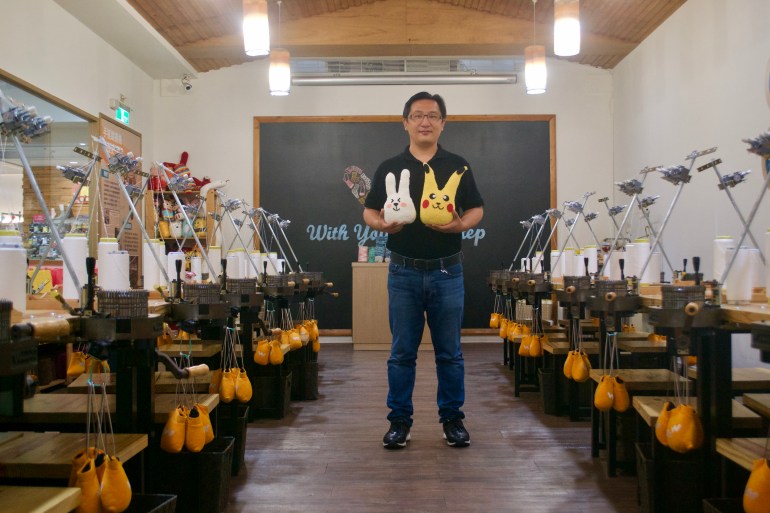
Wu’s “tourism factory” is part of an effort by Taiwan’s Economic Development Bureau to boost local tourism by directing funds towards infrastructure that already exists: its factories.
Once considered the “factory of the world”, Taiwan hopes its industrial tourism initiative will encourage some factories to keep operations local rather than following the international trend of moving to China or Southeast Asia, where land and labour costs are low.
The 20-year effort has resulted in more than 150 government-approved “tourism factories” and “manufacturing culture centres”, and up to 100 more independent examples. Curious tourists can visit museums for shoes, robots, suitcases, pencils, and even condoms, and come home with a DIY product to remember their visit.
The hope is that a greater emphasis on service – rather than just production – will build stronger brand loyalty and trust in Taiwanese companies in an increasingly competitive international market.
“It’s a sustainable concept. The [idea of] travel factories is to kind of remodel, not to build up,” Susan Lin, a professor of museum studies at Fu Jen University, told Al Jazeera.
“With tourism factories, you have to educate people about the procedure of making your products. They see how to [for example] preserve food, that it’s healthy and that it’s very safe.”
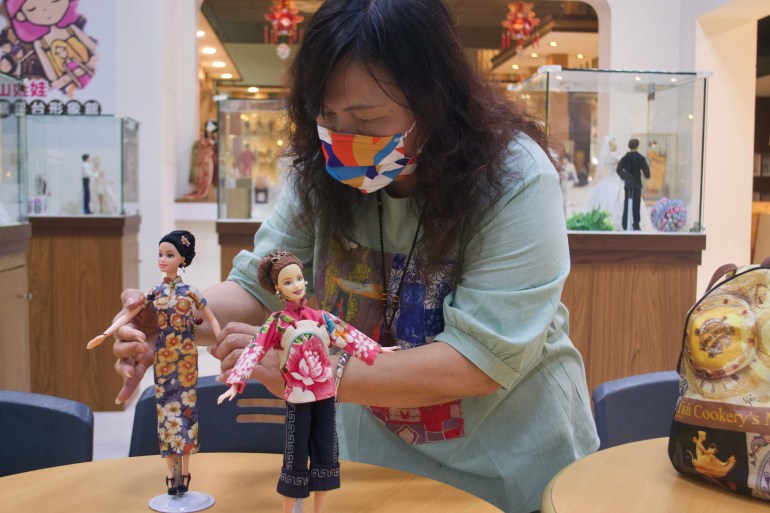
Guo Xuemei’s first Barbie dolls came from her aunt, who laboured daily at the Meining factory in Taishan, a suburb in New Taipei City, to produce the toys for export. All the other kids were jealous – the Taiwanese could produce Barbie dolls for export, but could not buy them domestically.
Workers were gifted Barbies as New Year’s gifts by the factory. But when a doll had even the slightest defect – a smudged lip or eye – factory workers could not help but bring it home rather than see it go to waste.
“Whether the Barbies my aunt brought me were taken or gifted to her, I don’t know,” Guo told Al Jazeera. But those dolls and their beautiful dresses inspired the rest of her career, first as a dressmaker, and now as a volunteer and teacher for the Taishan Barbie Doll Industry Culture Center.
During Guo’s aunt’s time, the small town of Taishan was known as Taiwan’s “Barbie town”.
At its peak, more than 8,000 workers were employed at the Meining factory to produce half the world’s Barbies for Mattel. An additional one-third of the city’s population became subcontractors for more detailed jobs, fixing loose threads and fastening bows out of home workshops.
“Taishan people had a saying, ‘We were raised on Barbie’,” Guo said. “Barbie is what best represents Taishan.”
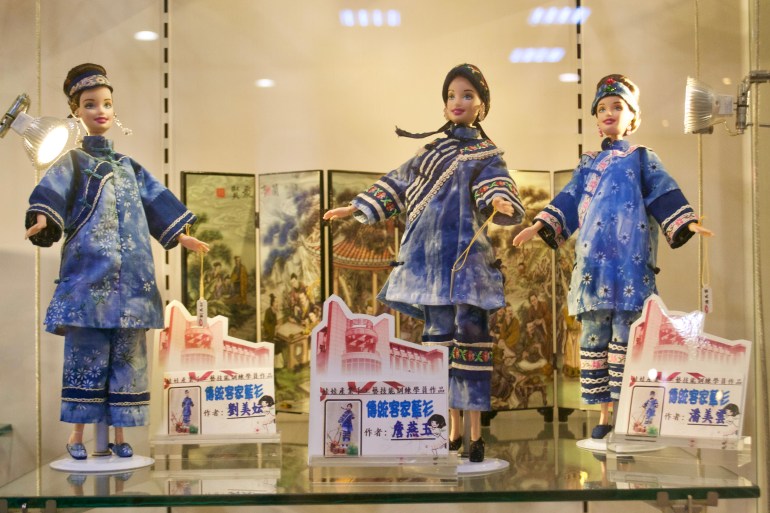
Taiwan’s economic miracle of the 1970s and 80s can be credited to factories like Taishan’s Meining doll factory, whose success as small and medium enterprises (SMEs) won them designations to exclusively produce products for one contractor, like Mattel in Taishan’s case.
Taiwan’s SMEs — often family-owned and operated — produced a majority of Taiwan’s exports at the time and became experts at supplying goods and parts to foreign firms at competitive prices. They thrived with the help of lax government regulation, robust land reform, and US economic aid pumped into the Taiwanese economy in the 1950s. In the 1970s, economic growth averaged 10 percent annually, and in the mid-80s, some estimates suggest there was one firm for every eight Taiwanese adults.
“Most Taiwan firms’ strength lies in their ability to supply goods to companies that have built demand through design, marketing, and branding but don’t have the capacity to produce products at a price the market will bear,” writes Shelley Rigger in her 2021 book The Tiger Leading the Dragon.
Today, this strength is exemplified best in companies like Foxconn and TSMC, which supply phones, chips, and other technologies to the world’s largest tech companies.
But the opening of China’s special economic zones in the 1980s meant that low-tech products like Barbie dolls could be produced at a lower cost overseas. Taiwanese companies moved their operations across the strait, helping propel China’s economic rise. By 1987, Mattel had left Taishan for China and Malaysia, leaving Taishan’s workers behind. Taiwan’s annual economic growth rate fell to 6.3 percent in the 1990s.
“The impact was huge, and it wasn’t only on jobs,” Guo said.

Six years after the Meining factory’s closure, Taishan’s mayor moved to keep Barbie culture alive through classes and cultural activities related to Barbie, including DIY classes led by former factory workers themselves. Today, as many reach their 70s and 80s, Guo has taken over that role. Taishan’s Barbie Industrial Cultural Center is one of Taiwan’s few industrial tourism sites that no longer manufactures its goods on display.
The companies that decide to keep manufacturing in Taiwan, even as the rest of their industry moves abroad, are not typically driven by profit earned from tourism. Some fear that intellectual property would be stolen if operations move to China; others see staying local as a long-term investment they hope will bear fruit in the local market. To survive the competition from China today, they focus on smaller orders and niche markets where more money can be made.
“We all know that the museum part is actually not a part where we can make a lot of money. Sometimes you might even lose money depending on the industry,” said Wu, the sock maker. “It’s not something you see the result of in one or two years. It maybe takes a whole generation, maybe 10 years to make kids familiar with a brand name.”
More than a factory
The first time Jessamine Lai learned anything in school about the local culture of Yilan, a county in the northeastern part of the island, was on a field trip to Orange Country, a kumquat candy factory that has been offering tours since 1979.
Ding-gang Lin, Lai’s classmate and lifelong friend, was the son of those factory owners, and the grandson of kumquat farmers who used to sell their fruits to local factories for candying. Seeing China’s economic rise, Lin’s parents decided to open their own factory and offer tours in a marketing effort to show customers how they used new, modern methods to dry and preserve the kumquats. He proudly claims his parents established the first “tourism factory” in Taiwan.
But when Lai and Lin were in school, they learned nothing about where they came from, a result of the ruling Kuomintang party’s 30-year martial law period and strict imposition of Chinese education and language – an experience that resonates today with China’s military drills and trade restrictions aimed at the democratically-ruled island, which Beijing considers its territory.
“Our textbook, the geography, it was all mainland China,” Lai told Al Jazeera. “Taiwan, there were about two chapters. Where’s Taipei, where’s Kaohsiung, where is the central mine, that’s it… We were not allowed to speak Taiwanese.”
Under Ding-gang Lin’s management, a cafe and DIY classes have been added to Orange Country. For Lin, the priority is connecting people with what he sees as their disappearing local culture, not attracting more customers.
“I always invite my friends, my classmates to join me to help the locals understand, to feel, what is our culture. Ours, the country people. When you taste that, it is our home style,” Lin told Al Jazeera.
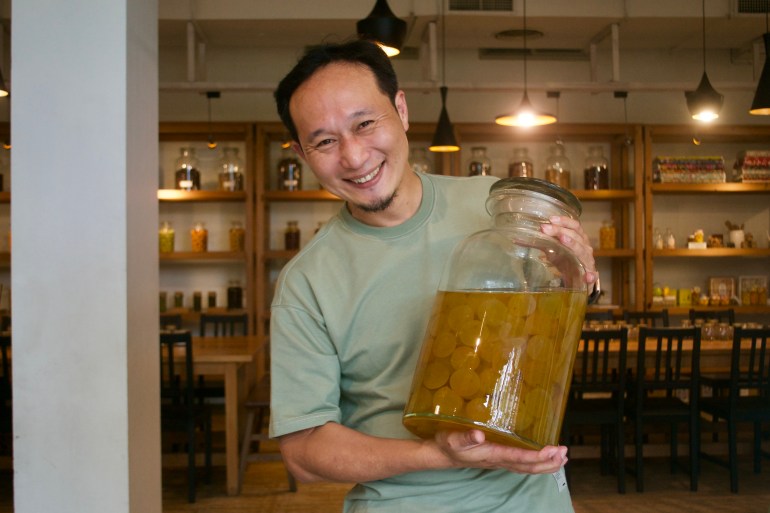
Guo has a similar attitude. Barbie became an indelible part of Taishan’s identity, but since she started working for the museum and cultural centre in 1993, she has been trying to make Barbie more accurately reflect the people of Taiwan.
At the museum, Barbies in Sakizaya, Amis, Atayal, and Seediq dress — some of Taiwan’s 16 Indigenous tribes — take up two whole display cases. Later this summer, she will lead a class on Hakka-style clothes for dolls in collaboration with the Taipei Hakka Studies Center.
“At the time, people only made Barbies for export,” Guo said. “So when I started teaching classes, I wanted to make Barbies with Taiwanese features.”